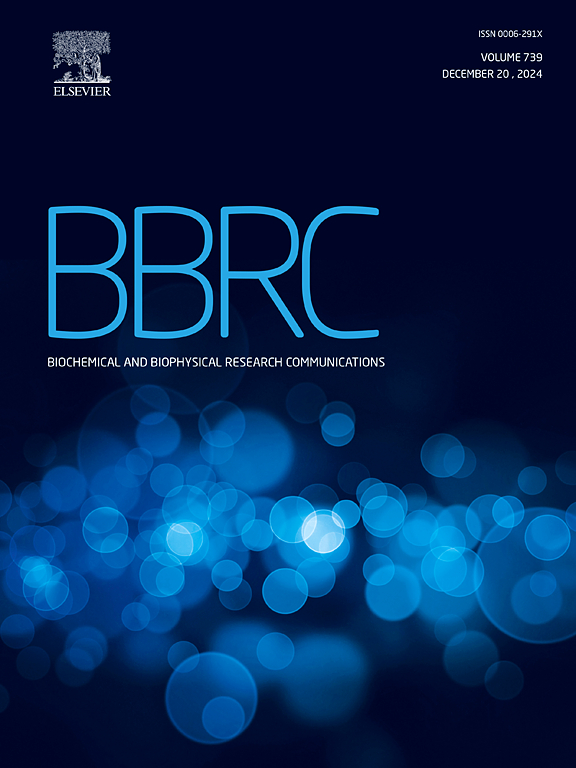Understanding the Molecular Mechanisms of SORBS2 in TNBC Lung Metastasis
IF 2.5
3区 生物学
Q3 BIOCHEMISTRY & MOLECULAR BIOLOGY
Biochemical and biophysical research communications
Pub Date : 2025-04-04
DOI:10.1016/j.bbrc.2025.151762
引用次数: 0
Abstract
Metastasis is the leading cause of recurrence and mortality in triple-negative breast cancer (TNBC), an aggressive subtype that predominantly spreads to the lungs, brain, bones, and liver, with lung metastasis being particularly prevalent. Despite the clinical significance of TNBC metastasis, the molecular mechanisms that drive lung-specific metastasis remain poorly understood. RNA-binding proteins (RBPs) are crucial regulators of post-transcriptional gene expression and are frequently dysregulated in cancers. This study identifies SORBS2 as a critical RBP implicated in TNBC lung metastasis. Using RNA sequencing (RNA-seq) and LACE-seq, we demonstrate that SORBS2 regulates a specific set of genes through direct binding to coding sequences (CDS), introns, and 3’ untranslated regions (UTRs), and its binding targets are linked to various pathways, including a possible association with Wnt/β-catenin signaling, among others. Functional assays confirm that SORBS2 knockdown inhibits proliferation, migration, and invasion in TNBC cells. These findings highlight SORBS2 as a key regulator of TNBC lung metastasis, with a context-dependent role that promotes metastatic behavior in highly metastatic TNBC cells, providing potential avenues for novel therapeutic strategies.
了解SORBS2在TNBC肺转移中的分子机制
转移是三阴性乳腺癌(TNBC)复发和死亡的主要原因,三阴性乳腺癌是一种侵袭性亚型,主要扩散到肺、脑、骨骼和肝脏,其中肺转移尤为普遍。尽管TNBC转移具有临床意义,但驱动肺特异性转移的分子机制仍然知之甚少。rna结合蛋白(rbp)是转录后基因表达的关键调控因子,在癌症中经常失调。本研究确定SORBS2是与TNBC肺转移相关的关键RBP。利用RNA测序(RNA-seq)和LACE-seq,我们证明SORBS2通过直接结合编码序列(CDS)、内含子和3 '非翻译区(utr)来调节一组特定的基因,其结合靶点与多种途径相关,包括可能与Wnt/β-catenin信号传导等相关。功能分析证实SORBS2敲低可抑制TNBC细胞的增殖、迁移和侵袭。这些发现强调了SORBS2作为TNBC肺转移的关键调节因子,具有促进高转移性TNBC细胞转移行为的环境依赖性作用,为新的治疗策略提供了潜在的途径。
本文章由计算机程序翻译,如有差异,请以英文原文为准。
求助全文
约1分钟内获得全文
求助全文
来源期刊
CiteScore
6.10
自引率
0.00%
发文量
1400
审稿时长
14 days
期刊介绍:
Biochemical and Biophysical Research Communications is the premier international journal devoted to the very rapid dissemination of timely and significant experimental results in diverse fields of biological research. The development of the "Breakthroughs and Views" section brings the minireview format to the journal, and issues often contain collections of special interest manuscripts. BBRC is published weekly (52 issues/year).Research Areas now include: Biochemistry; biophysics; cell biology; developmental biology; immunology
; molecular biology; neurobiology; plant biology and proteomics

 求助内容:
求助内容: 应助结果提醒方式:
应助结果提醒方式:


